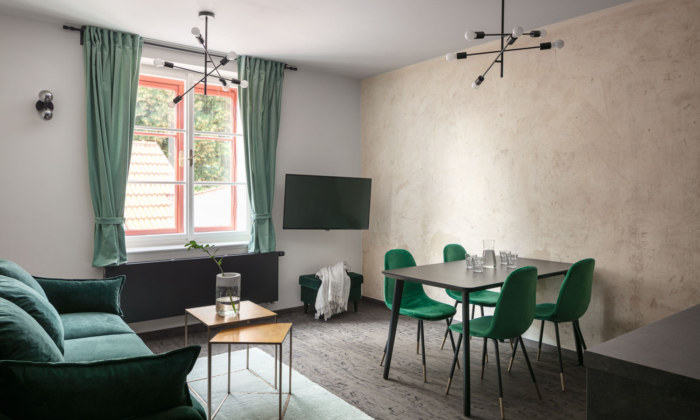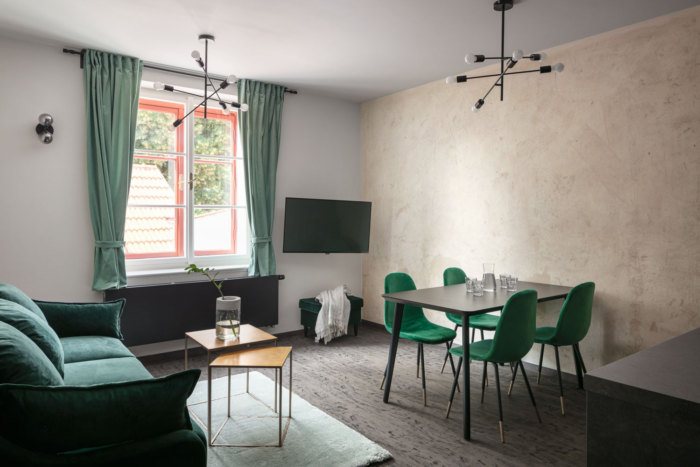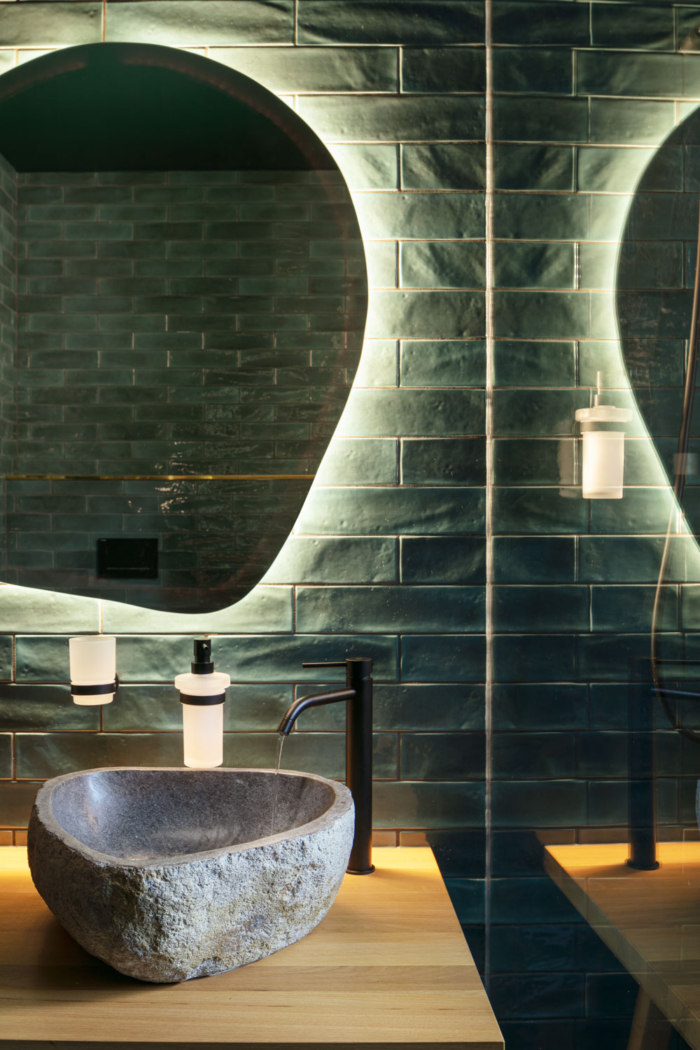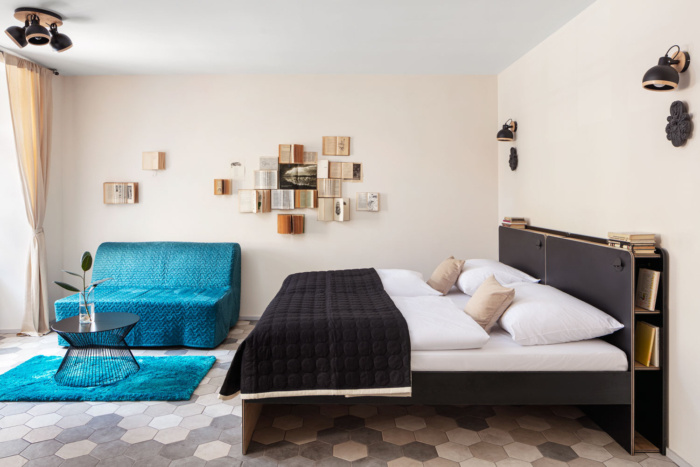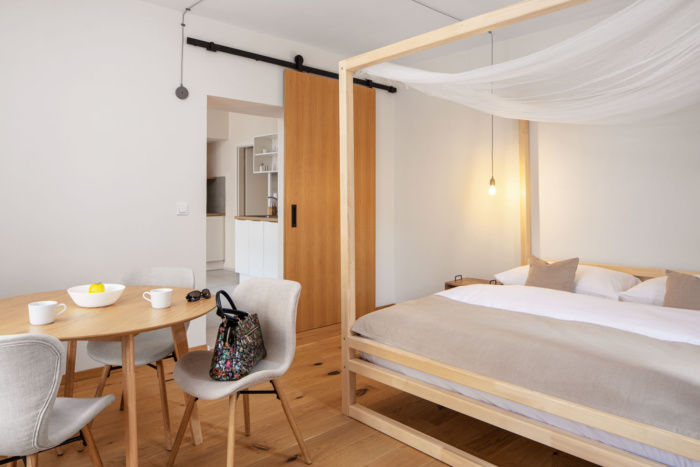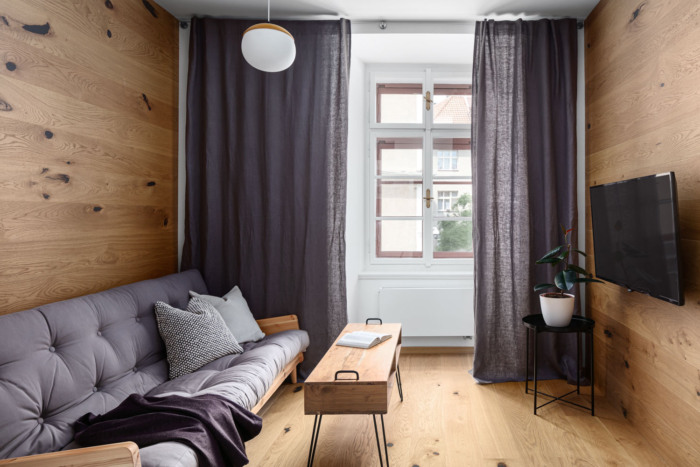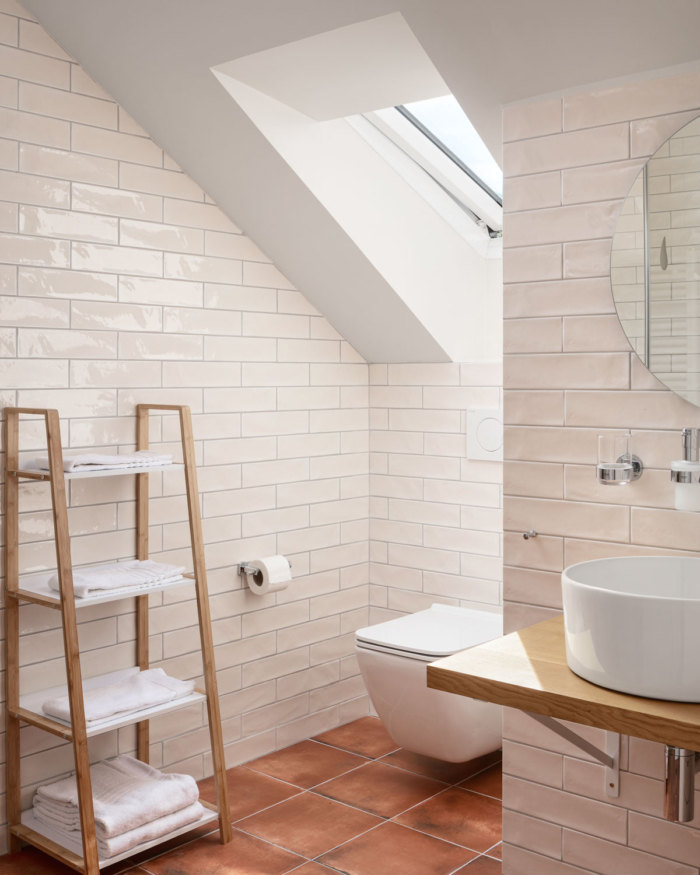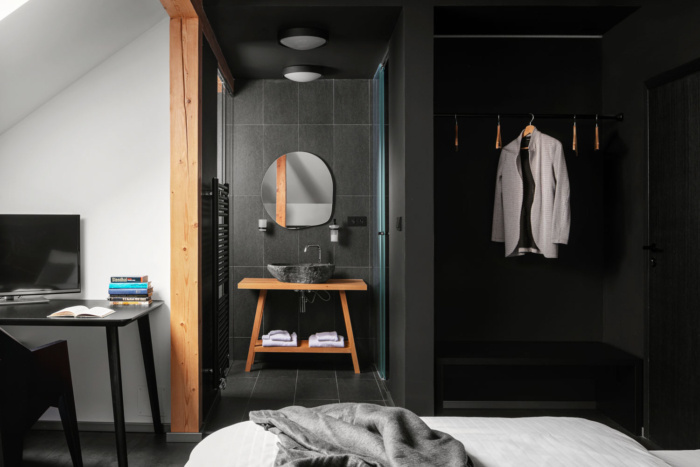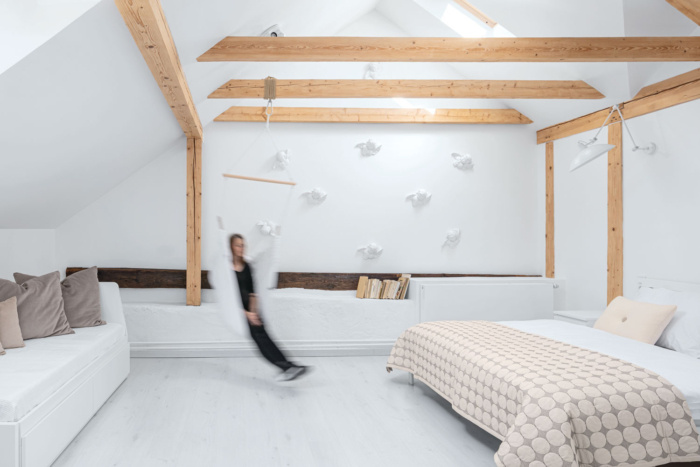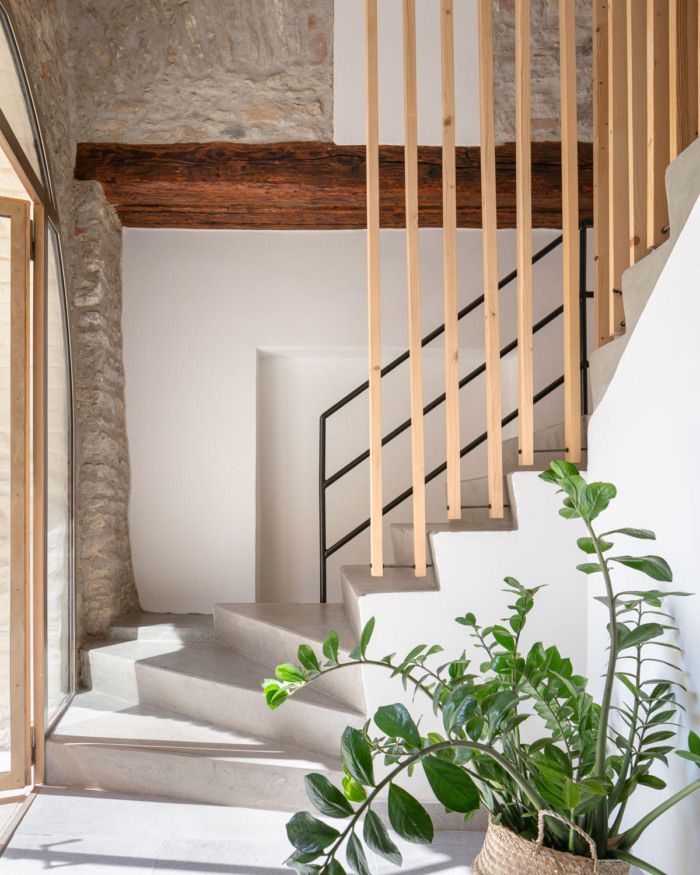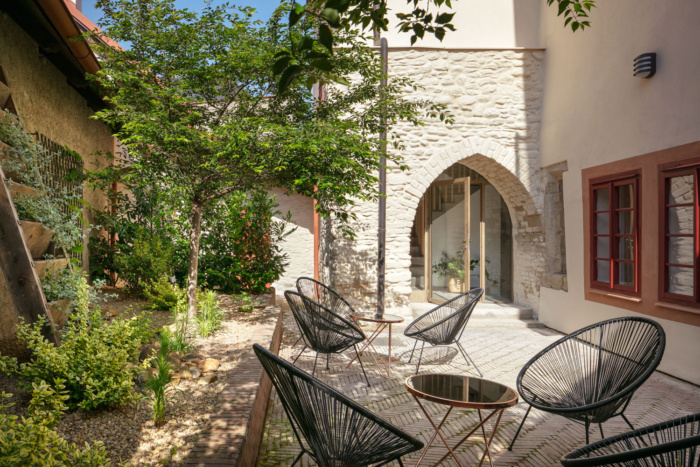Apartments Dačický
The rich history of a property meets contemporary style and comfort in the design of these Kutna Hora apartments by Tereza Komarkova.
The architect Tereza Komárková designed a conversion of the ground floor of a historic building in Kutná Hora to a café five years ago. Recently, she has redesigned the first floor and loft to be converted into apartments for the same investors as well. The name Dačický now stands for a complex project, which joins the rich history of the property with contemporary style and appreciation of comfort.
“Architecture is a dialogue between the known and the future we are just imagining,” says Tereza Komárková, who was born in Kutná Hora. That is why she wanted her design to take into consideration seven hundred years of history of the building. There are original cellar and perimeter constructions as well as a stone jamb of a pointed window from the Gothic period. Baroque is represented by an amazing 16-meter long beam covering the ground floor of the building. Modern history wasn’t very beneficial for the house. The architect, however, preserved square tiles from smoothened concrete and a concrete staircase, revealing its structure for a new purpose.
To keep converting future into history
The seven centuries of history that are imprinted in the building have influenced the creation of seven apartments. The Royal Apartment reminiscences the period when the king Wenceslas IV resided in Kutná Hora. The Dačický Apartment is named, similarly to the whole house and the café, after an important burgher and writer from Kutná Hora – Mikuláš Dačický of Heslov. The Silver Apartment is referring by its name and design to the most popular article of Kutná Hora. The Wooden Apartment reveals another highly valuable commodity. It is up to guests to choose accommodation based on their mood and personality. There is also a north-facing Miner’s Bedroom available and it is perfect for guests who love to have a lie-in. The architect Tereza Komárková adds: “Many good solutions are based on an initial disadvantage.”
The team had to overcome many obstacles during the realization. For example, the original intent to cast the floor in the loft with lightweight concrete couldn’t be realized due to static and organization issues. This was solved by a beam grid placed in the height of the horizontal roof construction that oscillated by 30cm between the top side of the beams and the original wear layer, and a cross-covering made from oriented strand boards. During the renovation, well-preserved oak beams were found on the ground floor.
The triangular and hexagonal motives keep repeating within the building. They can be found on metal shelves, lighting, floor tiling and cladding. One of the investor’s requirement was to balance quality and price. For this reason, the realization team decided to use cuttings from ceramic tile trims production on floor and walls of the common yard.
A personality from Kutná Hora revived
The relationship that the investors have to the history of both the building and Kutná Hora manifested itself already when ordering the project for Cafe Dačický several years ago. The most prominent feature of the café is a portrait of Mikuláš Dačický of Heslov. The rich and turbulent history of the building is well represented by the beam ceiling, stone construction and arched ceiling axis. The renovation added a distinctive polygonal selling wall bearing illuminated stories of regional wineries from Kutná Hora and Moravia, and a cooled showcase in the bar area displaying the sweets on offer. The new interior combines black and copper tones that were selected on purpose as copper used to protect vineyards. In the back part of the house, there is a confectionary kitchen with natural lighting and arched view to the inner yard that is available to the apartment guests.
Design: Tereza Komarkova
Photography: Jiri Lizler

